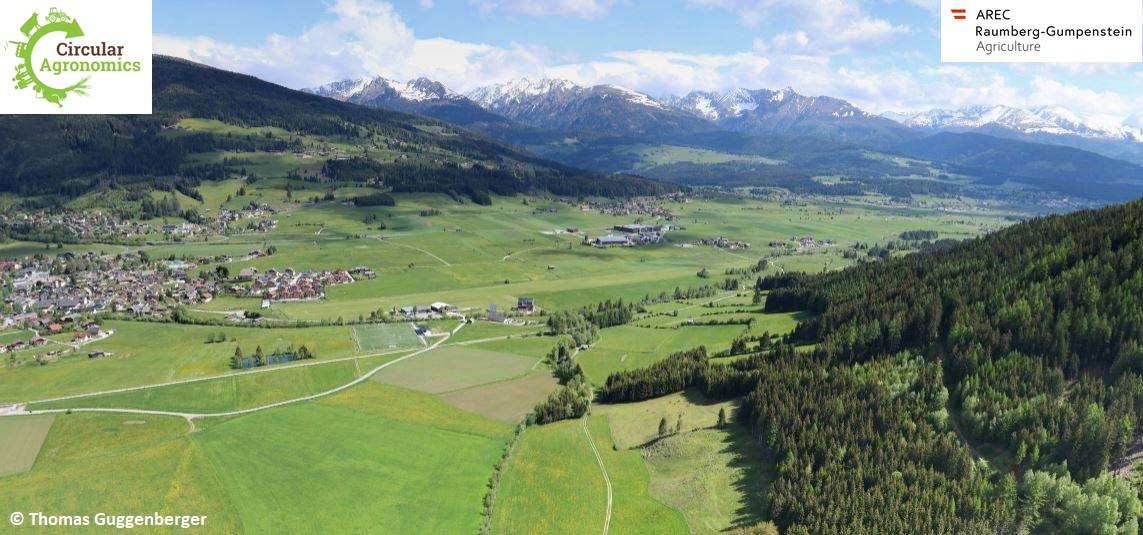Extensive milk production in disadvantaged areas has a long tradition in Austria and plays an important role in keeping the cultural landscape open. Nevertheless, milk production is also associated with a wide variety of environmental impacts (e.g. greenhouse gas emissions, nutrient losses, land use).
As part of the EU project “ Circular Agronomics ”, 20 organic dairy farms from Salzburg’s Lungau were examined for their environmental impact using life cycle assessment. The selected companies were participants in the “Reine Lungau” pilot project, which aimed to produce high-quality dairy products and close production and nutrient cycles within the project region. During the life cycle assessment, four key environmental impacts of dairy farms were examined in more detail:
- The global warming potential (GWP) examines the emissions of the main greenhouse gases (carbon dioxide, methane and nitrous oxide) and their effect on the climate.
- The cumulative exergy demand (CExD) describes the consumption of natural resources such as: land, minerals or metals.
- The eutrophication potential (EP) takes into account aquatic eutrophication by nitrogen and phosphorus as well as terrestrial eutrophication by phosphorus.
- The aquatic ecotoxicity potential (AE) includes the effects of pesticides and heavy metals on surface and groundwater.
The environmental impacts of the 20 Lungau farms were then related to two functional units (FU) (1 kg of milk and 1 hectare of agricultural land) and compared with the environmental impacts of a representative model farm, which was created on the basis of statistical data and average production values of Austrian organic dairy farms.
The results show that the Lungau farms have a significantly lower EP per kg of milk and per ha compared to the model farm. Furthermore, the CExD per hectare was around a quarter lower, which can be attributed to lower resource consumption due to the lower production intensity of the Lungau companies. With regard to the global warming potential, the Lungau farms perform better if 1 ha is used as FE, while the model farm appears advantageous if 1 kg of milk is used as FE. However, due to the high fluctuation range of the basic feed purchased and the lower production intensity, the Lungau farms cause a higher AE (regardless of the FE).
In summary, three production parameters were identified that significantly determine the environmental impact of milk production in Salzburg's Lungau:
- The stocking density
- The concentrated feed used
- The purchased basic feed
Due to the moderate intensity of these parameters, the extensively managed Lungau farms can make a competitive contribution to Austrian food production and thus emphasize the importance of location-adapted agriculture.







